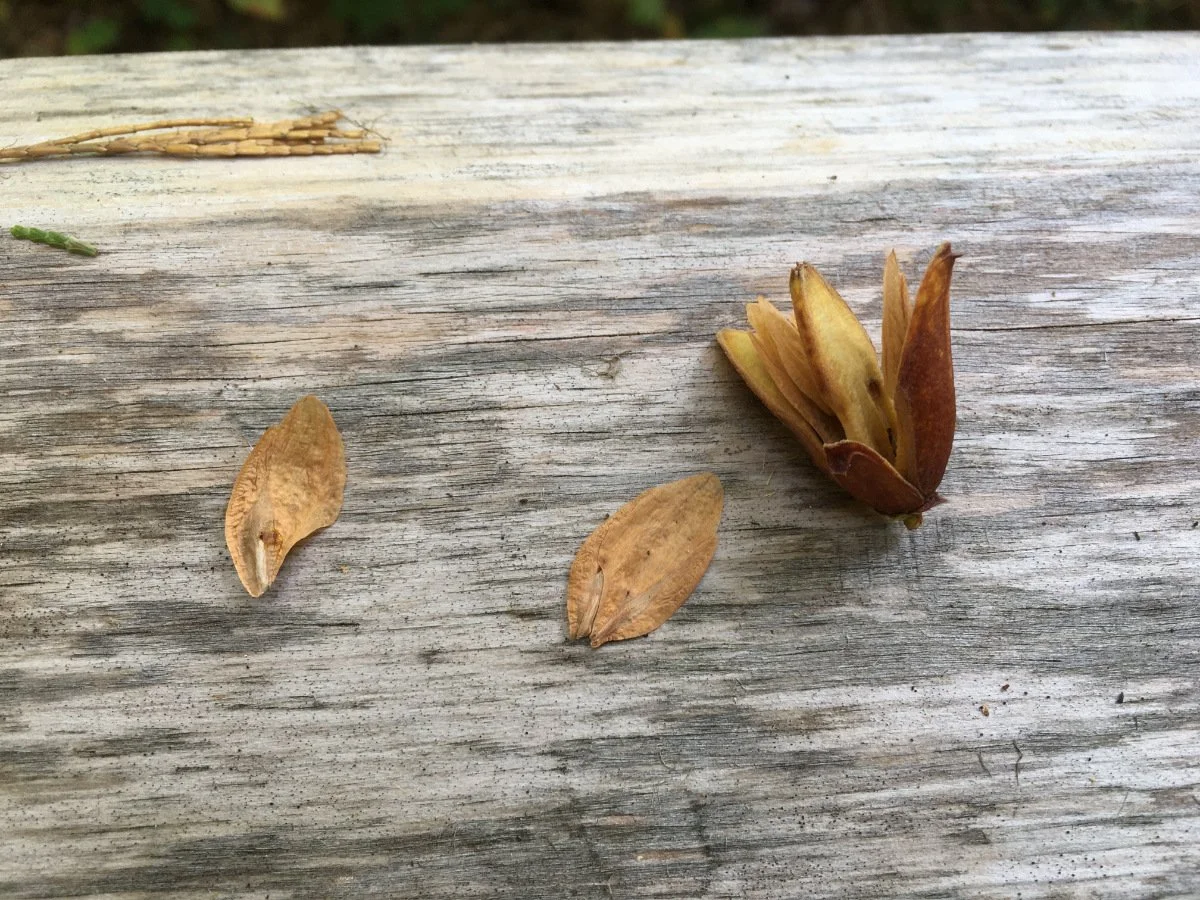Incense-cedar (Calocedrus decurrens) Cypress family (Cupressaceae)
If you catch the scent of an incense cedar, you will know where it gets its name. An aromatic tree that has a dense canopy that forms a beautiful pyramid shape when it grows out in the open. The small saplings were growing in the dense shade in the forest.
Bark
The bark is reddish brown and weathers grayish. When the tree is young the bark is smooth which can been see in the first photo. As the tree grows and matures, the bark becomes fissured, exfoliating in strips or plates on the lower trunk on old trees. On some of the older trees, the bark will get wrinkles or washboards around the base.
Leaves
Small, 1/4 - 3/4 inch, shiny evergreen. They are flattened, tightly encasing the twig. The opposite pairs of leaves so nearly neck-and-neck as to make apparent whorls of 4Their color is lustrous, dark green throughout the year with little or no browning in the winter. The leaves emit an aromatic odor when crushed. If a limb breaks off during a storm, I will find the leaves turning a beautiful copper color.
Pollen Cones
The small pollen cones start off light green and turn light brown as they mature. They open in winter and release clouds of yellow pollen. They usually open at the arboretum sometime around the end of December or the beginning of January.
Seed Cones
The seed cones are smooth and a light, yellow green as they form. Small spurs form on the outer tip. They are about an inch long when they are mature and become woody and brown. When it opens to release its seeds, it splits into what appears to be 3 scales but is actually 6 (a sterile fused pair in the center flanked by an equally long fertile pair, and then by a tiny, recurved sterile pair).
The are 4 or fewer seeds in a cone that are paired with 2 unequal wings.
Quick Reference:
Height: up to 140’
Leaves: small, 1/4 - 3/4 inch, shiny evergreen, opposite pairs of leaves so nearly neck-and-neck as to make apparent whorls of 4
Cones: 1 inch, brown & woody when mature, apparently only 3 scales but actually 6
Habitat: The tree appears to do well in a wide variety of moisture and temperature conditions.
Journal Location:
Mt. Pisgah Arboretum
Mt. Pisgah Arboretum Plant List
Eugene, OR
Sapsucker Wells
Red-breasted sapsuckers out at the arboretum will often create thousands of wells on an incense-cedar tree.
References
Jensen, Edward C. and Charles R. Ross. Trees to Know in Oregon, Oregon State University Extension Service, Revised April 2005.
Little, Elbert L. National Audubon Society Field Guide to North American Trees - Western Region, Knopf, 1998.
Mathews, Daniel. Cascade-Olympic Natural History. Raven Editions in conjunction with Portland Audubon Society, 1988.
























